
WOOOO! PIG! SOOIE!
The University of Arkansas
Location: Fayetteville, AR
Nickname: Razorbacks
Type of School: Public Land Grant Research University
Mascot: “Tusk VI” (Russian Boar)
Total student body: 33, 610 (Fall 2024)
University Established: 1871
Football Stadium: Donald W. Reynolds Razorback Stadium
Capacity: 76,212
Team Colors: Cardinal and White
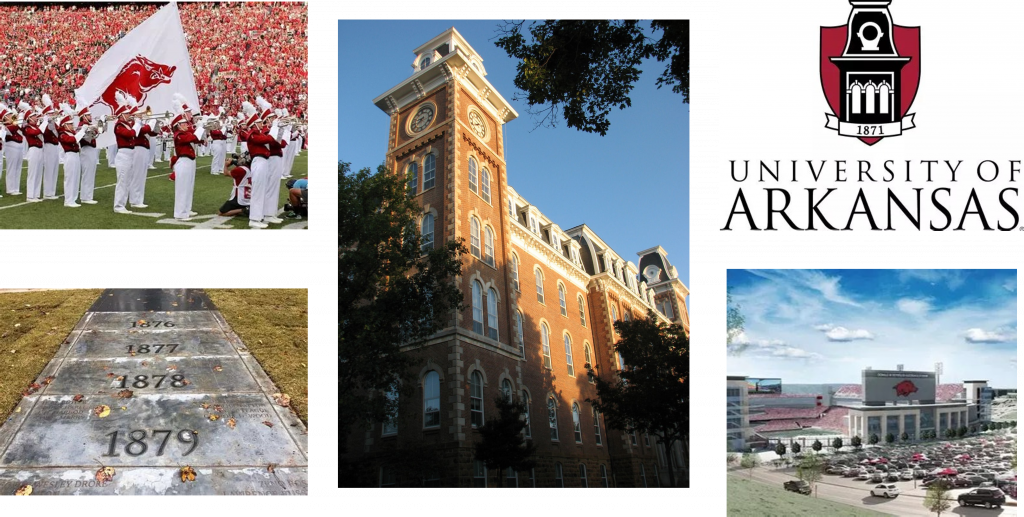
Alma Mater
“Pure as the dawn on the brow of thy beauty
Watches thy Soul from the mountains of God.
Over the fates of thy children departed
Far from the land where their footsteps have trod.
Beacon of hope in the ways dreary lighted
Pride of our hearts that are loyal and true.
From those who adore unto one who adores us
Mother of Mothers, we sing unto you. ”
Interesting Landmarks / Traditions
"Old Main" Building
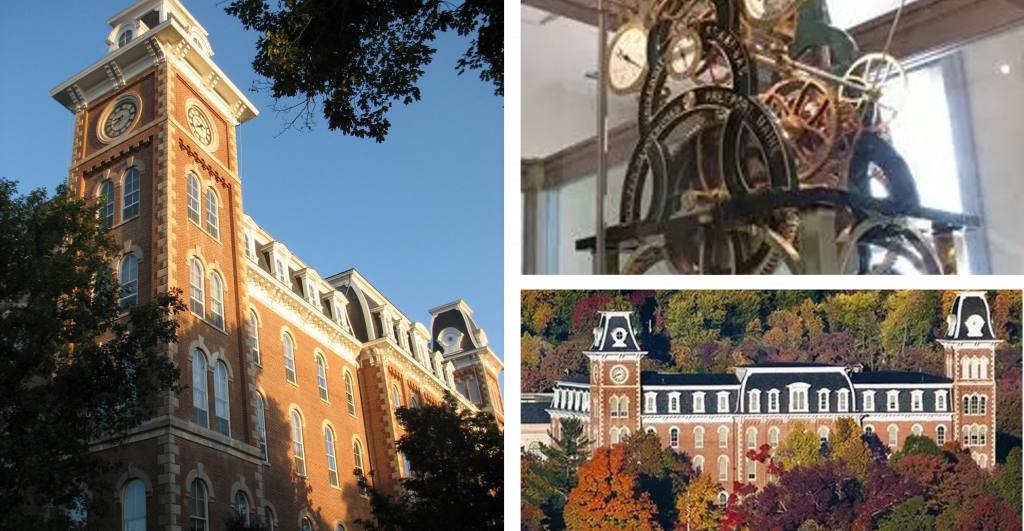
Completed in 1875, Old Main, a two-towered brick building designed in the Second Empire style, was the primary instructional and administrative building. It is listed on the National Register of Historic Places. Its design was based on the plans for the main academic building at the University of Illinois, which has since been demolished. At Arkansas, the taller tower is the bell tower, and the shorter tower is the clock tower. In addition to the regular chimes of the clock, the university’s Alma Mater plays at 5 pm every day.
Old Main contains classrooms, the restored Giffels Auditorium, as well as the administrative offices of the J. William Fulbright College of Arts and Sciences. The lawn at Old Main serves as an arboretum.
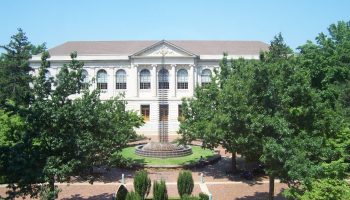
J. William Fulbright College of Arts and Sciences
Senior Walk
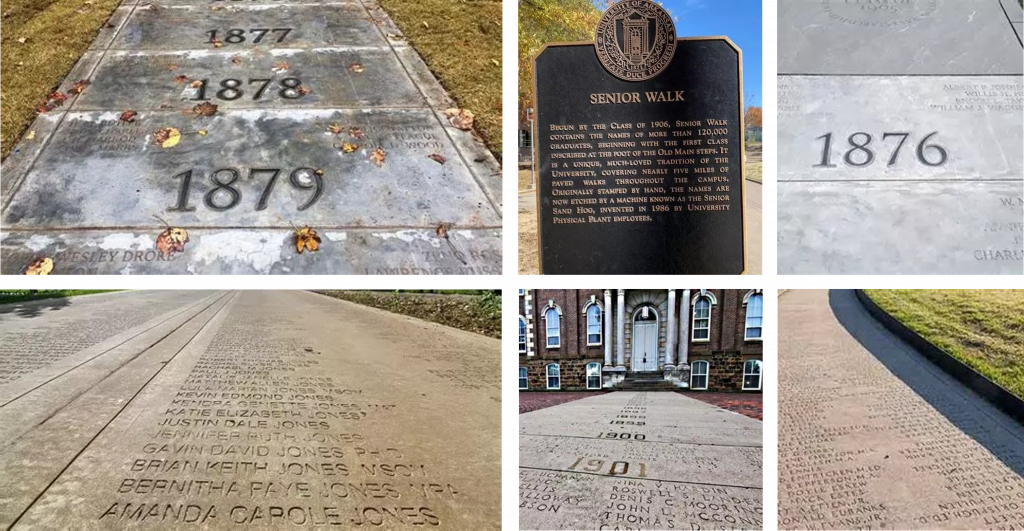
The Senior Walk at the University of Arkansas (UA) in Fayetteville (Washington County) is one of the oldest and most distinctive traditions maintained by the university. The walk, which contains the inscribed names of over 200,000 seniors and graduates, snakes through the campus for several miles and includes the names of famous athletes, architects, poets, heads of state, a Miss America, and some honorary names including Bill and Hillary Clinton. The university claims it to be the only one of its kind in the United States.
Some interesting facts and lore surround the senior walk. There was no recognition for the Classes of 1887 and 1895, as a change in the school calendar in those years resulted in no graduates. A supposed curse is associated with the Class of 1900, as some accounts state that the students began to consider the class block unlucky when it cracked. According to tradition, students who walk on that class inscription are doomed not to graduate. The idea of the curse stems from a false story stating that all class members died on a senior trip.
With the increasing number of graduates each year, the space needed for the walk became limited, causing the university to begin negotiating with private landowners just off campus for the placement of future graduates’ names.
The Razorback Statue and Tusk VI
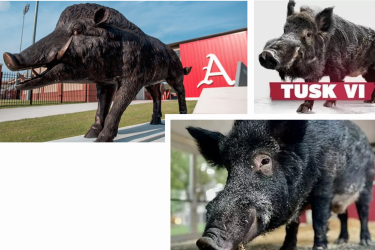
The University of Arkansas Razorback Tusk statue honors the school’s beloved mascot, Tusk, a Russian wild boar who has represented the university since 1997.
This statue represents the spirit and pride of the University of Arkansas. Tusk, a living mascot and direct descendant of the original, Tusk, has been a mainstay at Razorback events, including football games and pep rallies. The statue serves as a reminder of the university’s connection to the surrounding Ozark Mountains and the rich history of its mascot.
Trivia
- The University of Arkansas is one of only two universities in the country to have both a law school and a medical school on the same campus.
- Today, the University of Arkansas awards more than $180 million in financial aid and scholarships each year. U of A is one of only a few highly selective academic institutions to award both need-based and merit-based assistance.
- Hank Hancock, a student from and member of the Choctaw Nation, drew the first version of what we now call the “Running Razorback” in 1923.
- Five students have been awarded the Medal of Honor – Maurice Britt, Nathan Gordon, Edgar “Buck” Lloyd and Seymour Terry during World War II and James Stone during the Korean War.
- In 1871, a student was wounded by a knife in an argument over a math problem. Also that year, one student described his journey to the university as, “riding the Little Rock and Fort Smith Railroad as far as the town of Ozark, then taking a stagecoach to Fayetteville”, along the route now known as the “Pig Trail”. He also commented “On some steep hills, we had to get out and push the coach!”
